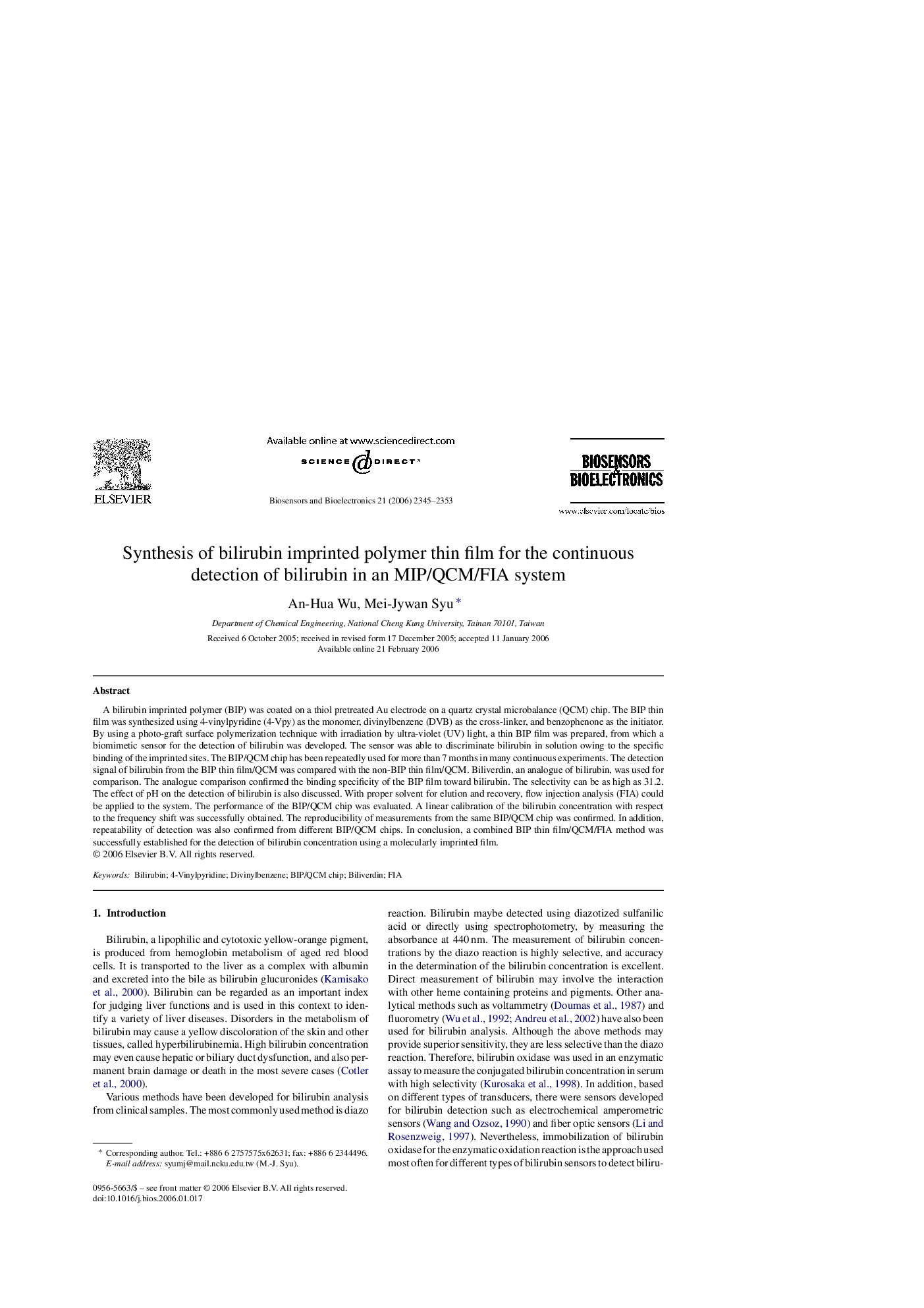| Article ID | Journal | Published Year | Pages | File Type |
|---|---|---|---|---|
| 870163 | Biosensors and Bioelectronics | 2006 | 9 Pages |
A bilirubin imprinted polymer (BIP) was coated on a thiol pretreated Au electrode on a quartz crystal microbalance (QCM) chip. The BIP thin film was synthesized using 4-vinylpyridine (4-Vpy) as the monomer, divinylbenzene (DVB) as the cross-linker, and benzophenone as the initiator. By using a photo-graft surface polymerization technique with irradiation by ultra-violet (UV) light, a thin BIP film was prepared, from which a biomimetic sensor for the detection of bilirubin was developed. The sensor was able to discriminate bilirubin in solution owing to the specific binding of the imprinted sites. The BIP/QCM chip has been repeatedly used for more than 7 months in many continuous experiments. The detection signal of bilirubin from the BIP thin film/QCM was compared with the non-BIP thin film/QCM. Biliverdin, an analogue of bilirubin, was used for comparison. The analogue comparison confirmed the binding specificity of the BIP film toward bilirubin. The selectivity can be as high as 31.2. The effect of pH on the detection of bilirubin is also discussed. With proper solvent for elution and recovery, flow injection analysis (FIA) could be applied to the system. The performance of the BIP/QCM chip was evaluated. A linear calibration of the bilirubin concentration with respect to the frequency shift was successfully obtained. The reproducibility of measurements from the same BIP/QCM chip was confirmed. In addition, repeatability of detection was also confirmed from different BIP/QCM chips. In conclusion, a combined BIP thin film/QCM/FIA method was successfully established for the detection of bilirubin concentration using a molecularly imprinted film.
